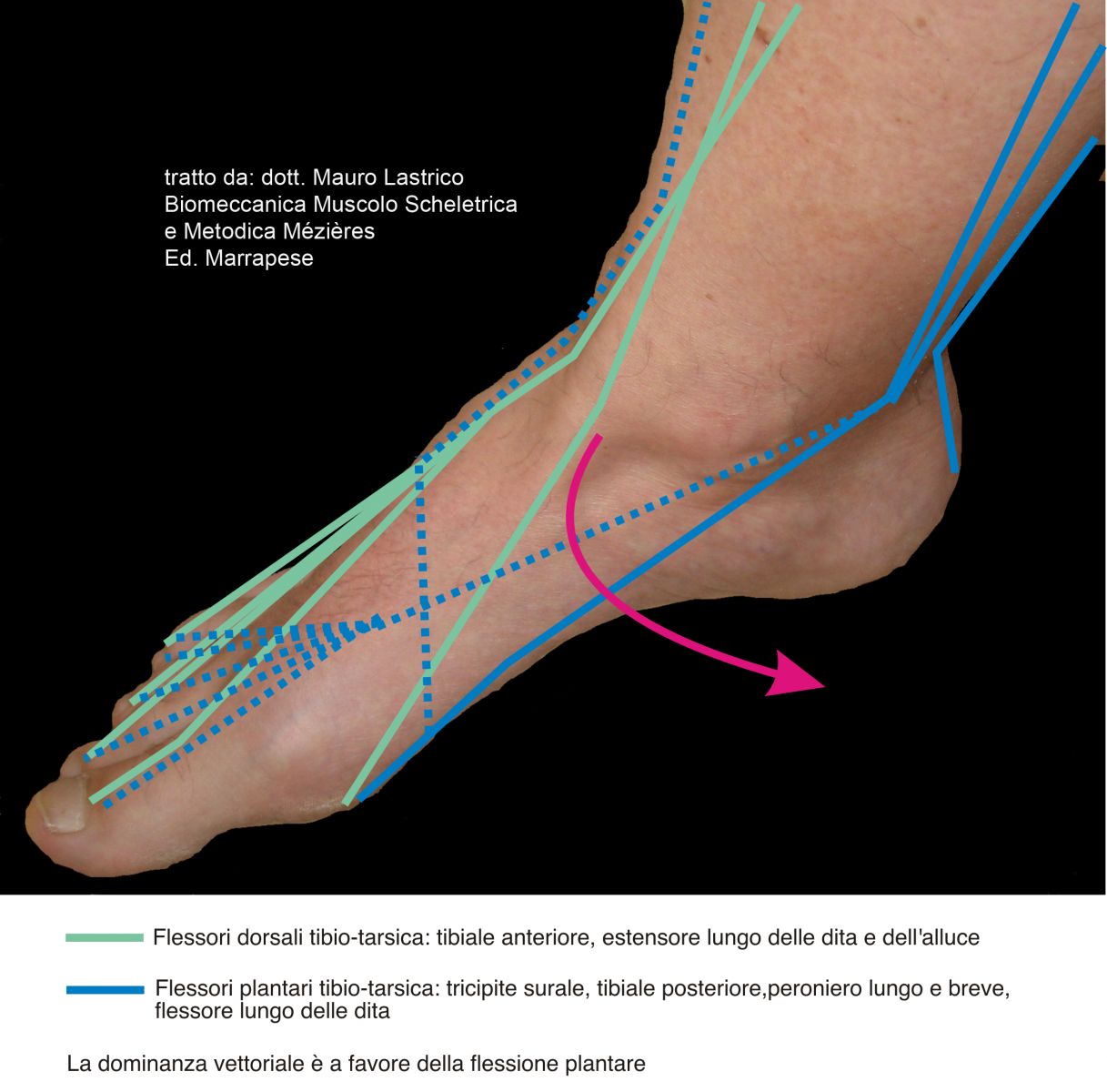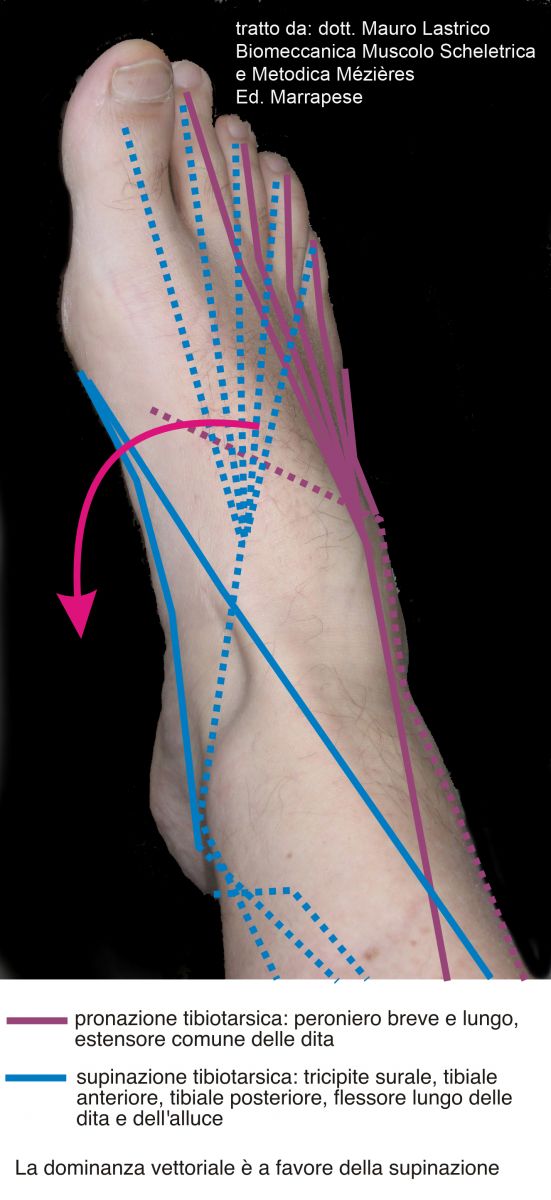Biomechanics of the Tibiotarsal Joint
Dr. Mauro Lastrico
Biomechanics: tibio-tarsal joint
Dr. Pt. Mauro Lastrico
Excerpt from:
"Musculoskeletal biomechanics and Mézières method"
Author: Dr. Mauro Lastrico
Marrapese Publisher
The vector dominance on the tibio-tarsal joint, both in terms of number of acting muscles and force, work, and power expressible, is in the direction of supination and plantar flexion.




In case the muscles acting on the tibio-tarsal joint enter excessive tension and subsequent shortening, the vector dominances in supination and plantar flexion are such that they cannot be balanced by the direct antagonists.
In this case, to place the sole of the foot on the ground while standing, the system must use adaptive strategies, modifying the femoro-tibio-fibular joint sequence.
In the presence of shortening of the plantar flexors and supinators, the sole of the foot will become able to contact the ground through hyperextension in internal rotation of the knee by the action of: hamstrings, adductor magnus, gracilis, triceps surae, tibialis posterior, flexor digitorum longus and flexor hallucis longus.

Copyright © 2025 AIFiMM Formazione Mézières Provider E.C.M. n. 1701. All rights reserved.



